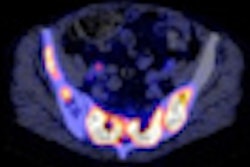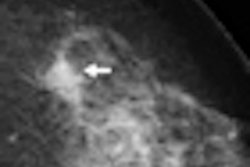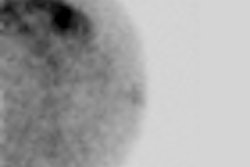The number of women who need to be screened to prevent one breast cancer death is much smaller than the statistic used by the U.S. Preventive Services Task Force (USPSTF) in its controversial 2009 screening recommendations, according to a study published in the March issue of the American Journal of Roentgenology.
This finding casts doubt on the accuracy of the USPSTF's recommendation, particularly as it pertains to women between the ages of 40 and 49. It also suggests that mammography screening is not only more effective, it causes less "harm" than the task force claims, according to lead author Dr. Edward Hendrick, of the University of Colorado, Denver, and Dr. Mark Helvie, of the University of Michigan (AJR, Vol. 198:3, pp. 723-728).
In 2009, the USPSTF withdrew its recommendation that women ages 40 to 49 receive regular breast screening, advising instead that they consult with their physician. But the task force's screening recommendations were based in part on an analysis of the number of women who needed to be invited to a screening mammography randomized, controlled trial (RCT) to prevent one breast cancer death, Hendrick and Helvie wrote.
The USPSTF compared estimates of the number needed to invite by age decade with the potential harms of screening mammography to argue that too many women between the ages of 40 and 49 years needed to be screened -- and, thus, too many potential harms might occur per life saved -- to recommend routine screening.
"Even though a woman invited to screening in an RCT chose not to undergo some or all rounds of screening, she still was included in the invited group in terms of breast cancer mortality," Hendrick and Helvie wrote. "That is, a breast cancer death of any woman assigned to the invited group, whether she attended screening or not, was counted in the breast cancer mortality rate of the invited group, thus decreasing the mortality benefit of invitation to screening compared with those actually attending screening."
This error skewed the USPSTF's interpretation of the data, according to Hendrick.
"The actual text of the USPSTF recommendation document shows that [the task force confused] the difference between the number needed to screen to prevent one breast cancer death with the number needed to invite," he told AuntMinnie.com.
Hendrick and Helvie analyzed data commissioned by the USPSTF for its 2009 update of breast cancer screening recommendations: computer modeling results from the Cancer Intervention and Surveillance Modeling Network (CISNET). They used the CISNET data, based on more modern mammography screening in the U.S., to estimate number of women needed to screen to prevent one breast cancer death and compared those values to the number of women needed to invite to screening to prevent one breast cancer death based on RCTs.
USPSTF based its recommendation on the latter, Hendrick said.
"In making their decision about when to start screening and how often, the USPSTF relied heavily on 'number needed to invite to screening' to save one life, rather than 'number needed to screen,' " Hendrick said.
Hendrick and Helvie found that for women between the ages of 40 and 49 years undergoing annual screening mammography, CISNET modeling results estimated a number needed to screen of 746 (39% of the number needed to invite of 1,904 estimated by USPSTF on the basis of RCT data).
The number needed to screen for women between 50 and 59 years was 351 (26% of the number needed to invite of 1,339 estimated by USPSTF from RCT data); for women between 60 and 69 years it was 233 (62% of the number needed to invite of 377 estimated by USPSTF from RCT data); and for women between 70 and 79 years it was 377 (there was no number needed to invite for this age group).
When the data were taken out of decade cohorts, Hendrick and Helvie found that annual screening of women between 40 and 84 years of age yielded a number needed to screen of just 84 to prevent one death from breast cancer.
In its 2009 recommendation, the USPSTF also did not take into consideration the lead time, or sojourn time of breast cancer -- that is, the maximum time between a breast cancer being detectable by mammography to its detection by mammography and by physical exam, Hendrick said.
"It's documented by clinical trials that in women between the ages of 40 and 49 the breast cancer sojourn time is shorter, about one to two years," Hendrick said. "As a result, if you're going to have an effective screening program, you have to screen this population closer to annually rather than biannually. The USPSTF didn't really take sojourn time into account."
The same CISNET results used by the USPSTF in formulating recommendations for screening mammography show that far fewer women than those estimated by the needed to invite to avert one breast cancer death undergo actual clinical screening, Hendrick and Helvie concluded.
"Our analysis calls into question the process the USPSTF used for making its 2009 recommendation," Hendrick told AuntMinnie.com. "Had they relied on number needed to screen data based on CISNET modeling, rather than estimating the number needed to invite to a randomized trial, they might have come to a completely different conclusion."




















